11 Intellectual Property Law
Learning Objectives
- Understand the fundamental principles of Canadian intellectual property law.
- Describe the key elements of copyright law, including the types of works protected, the duration of copyright, and the rights and limitations of copyright owners.
- Explain the requirements for obtaining trademark protection, including the distinctiveness of marks, registration procedures, and the rights and enforcement mechanisms available to trademark owners.
- Identify the basic principles of patent law, including the criteria for patentability, the patent application process, and the rights and limitations conferred by a patent.
- Recognize the significance of industrial designs in intellectual property law, including the scope of rights granted to the owners of registered designs.
Intellectual property (IP) law encompasses a set of legal rules and regulations that govern the rights and protections granted over creative and innovative works. These works can include inventions, designs, trademarks, artistic creations, and literary or musical works.
The main objective of IP law is to encourage and reward creativity and innovation by granting creators and innovators certain exclusive rights over their creations. By granting exclusive rights, it encourages individuals and businesses to develop innovative products, technologies, and artistic expressions.
If you are a creator, knowledge about IP law is crucial for several reasons:
IP rights enable creators and inventors to derive economic benefits from their creations. These rights allow them to commercialize their works, attract investments, and participate in licensing and royalty agreements.
IP law helps prevent unauthorized use, reproduction, or exploitation of creative works. It gives rights holders the ability to take legal action against infringers, thereby protecting their rights and interests.
Despite these laudable goals, there are limits to the IP protection and certainly situations where the exploitative rights will be exhausted. Each of the major classes of IP will be canvassed throughout this chapter including, copyright, trademarks, patents, and industrial designs.
“The World Intellectual Property Day is celebrated every year on April 26. The global campaign offers a unique annual opportunity … to celebrate inventors and creators …”
– World Intellectual Property Organization (WIPO)
The Grant of a Monopoly
At its heart, IP law contains a significant concession. In exchange for the effort of creation and innovation, creators of the IP are entitled to a grant of a monopoly over the creation. This means that the owner has the exclusive right to use the IP in certain ways, and can prevent others from using it without permission. For example, if a company has protection over a particular pharmaceutical drug it created, it has the right to prevent others from making, using, selling, or importing that drug without its permission.
The purpose of granting monopoly rights is to encourage innovation and creativity by providing creators and inventors with an incentive to create new works and ideas. By protecting their creations, IP law allows creators to recoup the costs of their research and development and to earn a profit from their creations. This can lead to tensions between the public, who may demand immediate access to the creation, and the creator, who will wish to exploit the creation for as long as possible.
One way of navigating this delicate tension is that the monopoly rights granted by IP law are not absolute and are subject to certain time limitations and exceptions.
Forms of Intellectual Property Rights
There are several forms of IP rights which each confer specific monopoly privileges to the rights holder, allowing them to exercise control over the use, distribution, reproduction, and commercial exploitation of the creations.
The following are the major intellectual property categories protected in Canada:
- Copyrights – Copyright protection applies to original literary, artistic, dramatic, or musical works. It grants the creator exclusive rights to reproduce, distribute, perform, or display their works. Copyright protection typically lasts for the author’s lifetime, the remaining calendar year in which the author died, plus an additional 70 years.
- Trademarks – Trademarks protect distinctive marks, such as logos or symbols, that are used to identify and distinguish goods or services in the marketplace. Trademark owners are granted the exclusive right to use and protect their marks (for 10 years subject to indefinite renewal), preventing others from using identical or similar marks in a way that may cause confusion among consumers.
- Patents – A patent grants inventors exclusive rights to their inventions for a limited period of time (20 years). It provides a monopoly right, enabling the patent holder to prevent others from making, using, selling, or importing the patented invention without their consent.
- Industrial Designs – Industrial designs protect the visual appearance or aesthetic aspects of a product. They grant the owner exclusive rights (for 15 years) to prevent others from manufacturing, selling, or importing products that have a similar design.
Federal Nature of IP Law
In Canada, intellectual property law falls under the jurisdiction of the federal government, meaning it is governed by federal laws and regulations. As such, the rules surrounding intellectual property apply regardless of what province or territory you live, work, or create in.
Having IP law being a national scope makes quite a bit of sense, as intellectual property rights extend beyond boundaries. Therefore, creators and inventors should be able to secure protection for their works or inventions throughout the entire country. A uniform set of federal laws ensures that individuals and businesses can rely on consistent rules and enforcement mechanisms, regardless of their location within Canada.
Legislative authority over intellectual property is derived from the Constitution Act, which sets the distribution of law-making powers between the Federal and Provincial governments. Under Section 91(22) of the Constitution Act, the Federal government has the power to legislate in areas related to:
“copyrights, patents of invention and discovery, and other proprietary rights.”
This provision clearly established that intellectual property is a matter of federal jurisdiction.
In exercising its constitutional authority, the Federal government has enacted legislation such as the Copyright Act, the Patent Act, and the Trademarks Act, which provide comprehensive frameworks for the protection and enforcement of those forms of IP.
The Federal government has also established administrative bodies, such as the Canadian Intellectual Property Office (CIPO), to oversee the registration and administration of IP rights:

Lastly, because of IP law being in the federal domain, Canada has become a signatory to various international IP agreements including:
- the Berne Convention for the Protection of Literary and Artistic Works;
- the Patent Cooperation Treaty; and
- the World Trade Organization’s Agreement on Trade-Related Aspects of Intellectual Property Rights (TRIPS).
Law of Copyright
Copyright gives creators of original works the exclusive right to control how those works are used. This includes the right to reproduce the work, distribute copies of the work, and make derivatives of the work. Copyright applies to a wide range of creative works, including literature, music, art, film, and software. It gives creators the ability to make decisions about how their work is used and to profit from it, while also allowing others to access and use the work in certain ways.
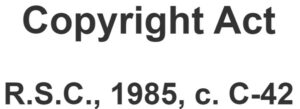
Copyright in Canada is regulated and enforced by the federal Copyright Act, R.S.C., 1985, c. C-42. This statute outlines the rights and obligations of copyright holders and users, as well as the limitations and exceptions to those rights.
Works and Expressions
Under the Copyright Act, various categories of works are protected; these categories are defined in Section 5 of the Act and consist of:
- Literary Works – section 2 of the Copyright Act defines “literary work” as any work that is written, regardless of its artistic quality. Includes any written, printed, or spoken creations, such as books, novels, poems, articles, computer programs, and databases.
- Musical Works – section 2 of the Act defines “musical work” as any work of music, regardless of the quality or purpose of the work. Includes any musical compositions, whether they have accompanying words or not. It encompasses melodies, harmonies, and rhythms.
- Artistic Works – section 2 defines “artistic work” as any painting, sculpture, drawing, photograph, or work of artistic craftsmanship. Includes a wide range of visual creations, including paintings, drawings, sculptures, photographs, engravings, and architectural works.
- Dramatic Works – section 2 defines “dramatic work” as any piece for recitation, choreographic work, or mime, intended to be performed. Includes any works of action, with or without words, intended to be performed. It includes plays, scripts, and screenplays.
- Sound Recordings – section 2 defines “sound recording” as any recording of sounds, regardless of the nature of the material objects, such as a tape, disc, or other device. Refers to the fixation of sounds in any medium, such as CDs, digital files, or vinyl records.
- Performer’s Performances – section 2 defines a “performer’s performance” as a performance that is fixed in a sound recording or a fixation of a performer’s performance. Protects the performance of an artistic or dramatic work, including acting, singing, playing a musical instrument, or dancing.
- Communication Signals – section 2 defines a “communication signal” as any signal transmitted by a telecommunication undertaking within the meaning of the Telecommunications Act. Encompasses radio and television broadcasts and includes signals used for the transmission of encrypted broadcasts.
These categories may overlap, and some works may fall under multiple categories simultaneously.
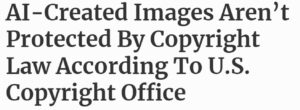
Creation of Copyright
Under the Copyright Act, copyright protection in Canada is automatic upon the creation of an original work; no registration or formalities are required. However, not every expression of a work will gain protection, only those that can meet the following test will qualify.
Legal Test for Copyright
A work is eligible for copyright protection if it is:
- an original expression;
- fixed in a tangible form; and
- its creation is connected to Canada.
Robertson v. Thomson Corp., 2004 CanLII 32254 (ONCA) at para. 35
I. Originality
Originality ensures that the creation is the product of independent intellectual effort and creativity. This means that the work must be the result of the author’s own skill, judgment, and individual expression, rather than being a mere copy or imitation of someone else’s work.
The Copyright Act does not specify a specific threshold for originality or require that a work be ground-breaking or innovative to qualify for protection. Rather, the focus is on the personal effort and creative choices made by the author. The full battery of the requirement for originality was canvassed by the Supreme Court of Canada in CCH Canadian Ltd. v. Law Society of Upper Canada, 2004 SCC 13:
“For a work to be “original” within the meaning of the Copyright Act, it must be more than a mere copy of another work. At the same time, it need not be creative, in the sense of being novel or unique. What is required to attract copyright protection in the expression of an idea is an exercise of skill and judgment. By skill, I mean the use of one’s knowledge, developed aptitude or practised ability in producing the work. By judgment, I mean the use of one’s capacity for discernment or ability to form an opinion or evaluation by comparing different possible options in producing the work. This exercise of skill and judgment will necessarily involve intellectual effort. The exercise of skill and judgment required to produce the work must not be so trivial that it could be characterized as a purely mechanical exercise. For example, any skill and judgment that might be involved in simply changing the font of a work to produce “another” work would be too trivial to merit … an “original” work.”
CCH Canadian Ltd. v. Law Society of Upper Canada,
2004 SCC 13 at para. 16
According to the court’s comments in CCH, even works that build upon or are influenced by pre-existing works can still be considered original, as long as they exhibit a degree of independent thought and creative expression. The example of changing a font would not be original, but imagine that two authors write about the same historical event. Because their particular expressions and choices of language, style, and structure would be original, they are both entitled to copyright protection.
It is sometimes difficult to think that originality can arise even if there is inspiration from an idea of another source. Again, the idea is not protected but, instead the expression. Consider the example of movies — they may overlap, even very closely, but if there is a unique script, unique characters, unique events, then the similarities may still be said to original.
Example – Originality or a Copyright Rip-Off?
Look at posters for the following movies. Clearly there are similarities, but even so, is there originality?
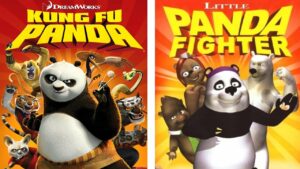

There will certainly be cases where a work is not just similar to an existing work but is actually substantially similar or an exact replica of an existing work. In such cases, there would be a lack of originality and the work would also likely constitute a copyright infringement (discussed later).
Foundational Law – CCH Canadian Ltd. v. Law Society of Upper Canada, 2004 SCC 13
The Law Society of Upper Canada (LSUC) ran a research library that offered photocopy services to its lawyer members. In addition to copying services, the LSUC provided members with a variety of other resources including reported judicial decisions, headnotes preceding those decisions, a case summary, and a topical index. The headnotes contained a case summary, a statement of the case, the case title, and other relevant case information. The topical index consisted of a list of cases categorized by main topics, accompanied by brief summaries of the decisions. The judicial decisions were reproductions of the original rulings, with each decision accompanied by the date of the case, the involved courts, the names of the counsels representing each side, and lists of associated cases, statutes, and parallel citations. Furthermore, the publishers had made grammatical corrections to the decisions.
CCH Canadian Ltd., Thomson Canada Ltd., and Canada Law Book Inc. (the case publishers) filed a lawsuit against the Law Society, alleging copyright infringement due to the distribution of photocopies as well as the other materials (headnotes, summaries, etc.).
The case went to the Supreme Court of Canada where, among many other things, the court concluded that the creation of headnotes, summaries, and topical indices involved sufficient exercise of skill and judgment so as to render them “original” works. However, the court also noted that the judgments themselves were not copyrightable, nor were the typographical corrections done by the editors sufficient to attract copyright protection – these would be mechanical or trivial exercises — not original.
II. Fixation
Another requirement for copyrightability is fixation. Fixation refers to the process of embodying or recording a work in a tangible form that can be perceived, reproduced, or communicated.
In practical terms, fixation means that an idea or concept alone is not eligible for copyright protection. It is only when the work expressing the idea is fixed in a tangible form that copyright protection comes into play. For example, a song can be copyrighted once it is recorded or written down, a book is protected once it is written or saved as a file, or a film is eligible for copyright when it is captured and saved on a medium.
Fixation serves several purposes most notably, it allows for the identification of the specific work and provides evidence of the authorship of the work.
III. Connected to Canada
The final criteria for copyright protection is that the creation of the work be connected to Canada. This requirement states a work must be authored by a qualifying individual and be published in Canada or a reciprocating country to be eligible for protection.
A qualifying individual is a citizen or permanent resident of Canada, or a person who is a citizen or permanent resident of a country that is a member of the Berne Convention, the Universal Copyright Convention, or the World Trade Organization (WTO). Therefore, works created by Canadian citizens or permanent residents automatically fulfill this requirement. Additionally, works created by individuals from countries that are members of those international agreements are also eligible for protection in Canada.
Registration of Copyright under the Copyright Act
Recall that copyright protection is automatic and you do not have to register your work to protect it. That being said, registering your work under the Copyright Act with the Canadian Intellectual Property Office (CIPO) can be beneficial because it provides a public record of your ownership of the copyright. This can be useful if you need to prove your ownership of the work; for example, in the event that someone infringes on your copyright.
External Resource
CIPO maintains a free, searchable database that you can use to explore registered works:
https://www.ic.gc.ca/app/opic-cipo/cpyrghts/dsplySrch.do?lang=eng
Copyright is most often denoted using the symbol of the letter “C” enclosed in a circle.

Duration of the Copyright
Once an author has a copyrightable work, how long does their protection last? The copyright duration is established in section 6 of the Copyright Act which states:
Except as otherwise expressly provided by this Act, the term for which copyright subsists is the life of the author, the remainder of the calendar year in which the author dies, and a period of 70 years following the end of that calendar year.
For anonymous works or works published under a pseudonym, the copyright duration is 75 years following the end of the calendar year in which the work is made. In the case of joint authorship, copyright lasts for the life of the last surviving author, plus an additional 70 years after their death.
Example – Duration of Copyright
Imagine, Lara Montgomery published an acclaimed novel in 1995. Tragically, she passed away on June 25, 2025. Following section 6 of the Copyright Act, the copyright protection for her work would last until the end of the calendar year in which she died, which is December 31, 2025 and then, adding 70 years to that date. Therefore, the copyright for Lara Montgomery’s novel would expire on December 31, 2095. As a result, her work would enter the public domain on January 1, 2096, enabling unrestricted use and distribution by others without violating any copyright laws.
The Public Domain
What happens when the duration for protection expires? As mentioned in the example above, there is something called the “public domain”. The public domain refers to a body of works that are no longer protected by copyright or intellectual property laws, or works that were never subject to copyright protection in the first place. These works are freely available for the public to use, copy, adapt, and distribute without obtaining permission or paying royalties to the original creators.
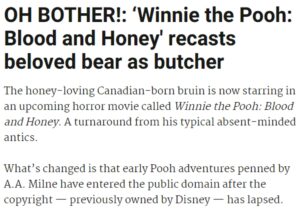
Some very famous works have found their way into the public domain:
- “Anne of Green Gables” by Lucy Maud Montgomery – Lucy Maud Montgomery passed away in 1942 and, as a result, “Anne of Green Gables” is now in the public domain, and anyone can freely reproduce, adapt, or perform the story without seeking permission.
- Original James Bong by Ian Fleming – Ian Fleming, the author of the James Bond series, passed away in 1964. As a result, his works, including the original James Bond novels, have entered the public domain in Canada.
- Original Sherlock Holmes by Sir Arthur Conan Doyle – Sir Arthur Conan Doyle, the creator of Sherlock Holmes, died in 1930. His works, including the majority of the Sherlock Holmes stories, are now in the public domain in Canada.
- Winnie the Pooh by A.A. Milne – A.A. Milne published the first Winnie-the-Pooh book in 1926. Milne passed away in 1956 and therefore, the original Winnie the Pooh entered into the public domain.
Economic Rights Under the Copyright Act
… copyright, in relation to a work, means the sole right to produce or reproduce the work or any substantial part thereof in any material form whatever, to perform the work or any substantial part thereof in public or, if the work is unpublished, to publish the work or any substantial part thereof, and includes the sole right

Part of the economic exploitation of a work may result in licensing and the receipt of royalties. Licensing refers to the process of granting permission to someone else to use a copyrighted work, while royalties are the payments made to the copyright owner in exchange for that permission.
Licensing agreements are contractual arrangements between the copyright owner (licensor) and the person or entity seeking to use the copyrighted work (licensee). The terms of the agreement outline the scope of the licensed rights, the duration of the license, any restrictions or conditions, and the financial arrangements, including royalties.
Royalties are the financial compensation paid to the copyright owner or rights holder for the authorized use of their copyrighted work. It is a form of payment to ensure that the creator receives fair compensation for the use of their intellectual property. The amount and structure of royalties can vary depending on certain factors, including the nature of the work, the scope of the license, the commercial value of the work, and the bargaining power of the parties involved. Royalties can be paid as a percentage of revenue generated from the use of the work (i.e., sales, ticket sales, broadcasting fees) or as a flat fee.
To facilitate the royalty collection process, there are numerous collecting societies, also known as copyright collectives or collective management organizations. Collecting societies can negotiate licenses with users of copyrighted materials, collect royalties from licensees, and distribute those royalties to the copyright owners. They often operate under tariffs, which are standard rates established for different uses of copyrighted works — this provides a transparent framework for licensing and royalty collection.
These collecting societies, such as the Society of Composers, Authors, and Music Publishers of Canada (SOCAN), help streamline the licensing process.

Moral Rights Under the Copyright Act
Moral rights refer to the non-economic rights of creators that are separate from their economic rights. These rights recognize the connection between an artist and their work and protect their reputation and integrity. Moral rights allow creators to control how their works are presented, displayed, or modified, even after they have transferred their economic rights.
Moral rights are codified in section 14.1 of the Copyright Act which states:
14.1 (1) The author of a work has, subject to subsection (2), the right to the integrity of the work and, in connection with an act mentioned in section 3, the right, where reasonable in the circumstances, to be associated with the work as its author by name or under a pseudonym and the right to remain anonymous.
Flowing from this section are two main moral rights for authors:
- Right to Integrity – the author has the right to the integrity of their work. This means they have the authority to prevent any modifications, alterations, or distortions of their work that could be prejudicial to their reputation. It protects the work from being presented in a way that may harm the creator’s honour, morality, or reputation.
- Right to Association – the author has the right, under reasonable circumstances, to be associated with their work as its author. They can choose to be identified by their real name or by a pseudonym. Additionally, authors have the right to remain anonymous if they prefer not to disclose their identity publicly.
The bundle of moral rights codified in section 14.1 persist even after a transfer or assignment of economic rights; this means that authors can still enforce their moral rights even if they have sold or licensed their work. In effect, moral rights cannot be assigned however, those rights can be waived by an author. Assuming a waiver of moral rights is effective, it would diminish the author’s claim that their moral rights have been violated.
The Copyright Act provides remedies for the infringement of moral rights, including injunctions, damages, and orders for the correction of the work or the attribution of authorship. One of the more famous cases of moral rights is Théberge v. Galerie d’Art du Petit Champlain Inc., 2002 SCC 34.
Foundational Law – Théberge v. Galerie d’Art du Petit Champlain Inc., 2002 SCC 34
In 1985, the painter, Thérèse Théberge, created a mural on the exterior wall of a building in Quebec City. The building’s owner, Galerie d’Art du Petit Champlain, decided to remove the mural in 1990 without consulting Théberge or obtaining her permission. Théberge sued the gallery for copyright infringement and sought damages.
The case primarily centered on the moral rights provision of the Copyright Act. Théberge argued that the removal of her mural violated her moral rights as an artist. The gallery, on the other hand, contended that it owned the building and had the right to do what it wanted with the mural.
In its 2002 decision, the Supreme Court of Canada ruled in favour of Théberge emphasizing the importance of moral rights. The court affirmed that moral rights are independent of economic rights and cannot be assigned or transferred to others (only waived). It held that the removal of the mural constituted a violation of Théberge’s moral rights, specifically her right of integrity.
Copyright Infringement

Section 27(1) of the Copyright Act defines copyright infringement as follows:
It is an infringement of copyright for any person to do, without the consent of the owner of the copyright, anything that by this Act only the owner of the copyright has the right to do.
Therefore, copyright infringement refers to the unauthorized use or exploitation of a copyrighted work without the permission of the copyright owner.
Myth-Busting
Myth: “It’s not copyright infringement, if I don’t charge for it.”
Incorrect. Copyright infringement is not contingent on whether or not money is made from the unauthorized use of the copyrighted material. The core issue lies in the unauthorized use of a protected work without the permission of the copyright holder. Even if no financial gain is derived from the unauthorized use, copyright holders have the right to protect their exclusive rights to reproduce, distribute, display, or create derivative works from their copyrighted material. Therefore, an infringement action can still be pursued, regardless of whether the infringer profits monetarily. Charging for the use of copyrighted material may exacerbate the damages claimed, but it is not a determining factor for establishing infringement.
An infringement can occur in various ways, such as copying, distributing, selling, performing, or displaying the copyrighted work without authorization.
Legal Test for Copyright Infringement
To prove copyright infringement in Canada, the following elements must be present:
- A work protected by copyright – this includes original literary, artistic, dramatic, and musical works, as well as sound recordings, performances, and communication signals.
- Unauthorized use of the work by the alleged infringer – this includes reproducing, distributing, performing, or displaying the work, or creating a derivative work based on it. Importantly, it does not need to be use of the exact work, it may still be an infringement if the work is substantially reproduced.
If these elements are present, the copyright owner may be able to bring a lawsuit against the alleged infringer seeking damages or an injunction to prevent further infringement.
Fair Dealing Defence
We began this chapter by noting, intellectual property attempts to balance the dual interests of the general public and creators. With copyright, it is important to recognize the time, effort, and skill that creators invest in their works and provide them sufficient legal protection. However, the law also recognizes that there should be exceptions to those protections to ensure that copyright does not unduly restrict access to knowledge, creativity, education, research, and other important societal interests.
One the main exceptions to the copyright monopoly is the defence of fair dealing. Fair dealing allows individuals to use copyrighted material without permission from the copyright owner or payment of royalties under certain circumstances. Section 29 of the Copyright Act states:
Fair dealing for the purpose of research, private study, education, parody or satire does not infringe copyright.
The precise limits of those categories for fair dealing are not explicitly defined in the Copyright Act but have been explored through judicial interpretation:
- Research and private study – this category covers the use of copyrighted material for research purposes or personal study. It allows use of copyrighted works to facilitate learning.
- Criticism and review – fair dealing allows the use of copyrighted material for the purpose of criticism, review, or commentary. This category enables individuals to engage in discussions and express opinions about creative works without infringing copyright.
- Education – allows the use of copyrighted material in educational settings, such as schools and universities. It enables teachers and students to access and incorporate copyrighted works into their educational activities.
- Parody and satire – allows artists and creators to engage in creative and humorous commentary on existing works.
Each of these categories of use reflect instances where expanded public access may be more “fair” and thus, authors are required to ease up on their monopoly rights over the works.
When precisely will the use of a work be fair? Would the use of an entire textbook for a post-secondary law course be fair? What about playing a short copyrighted video clip? To better assess the limits of fair dealing, the landmark case of CCH Canadian Ltd. v. Law Society of Upper Canada (referred to earlier in this chapter), crafted a series of six factors used in assessing whether fair dealing applies.
Foundational Law — CCH Canadian Ltd. v. Law Society of Upper Canada, 2004 SCC 13
As a reminder, the CCH case involved the Law Society of Upper Canada, which operated a Great Library providing legal research services to its members. The Law Society had a practice of photocopying portions of legal texts for its members upon request. However, the publishers believed that this practice infringed on their copyright and sought compensation for the copying.
One of the key issues before the SCC was whether the Law Society’s photocopying activities constituted fair dealing, thereby exempting them from the requirement of obtaining permission from copyright holders.
The Supreme Court unanimously held that the Law Society’s photocopying activities fell within the fair dealing exception.
The following are the factors used to determine if fair dealing applies:
- Purpose of the Dealing – the court emphasized that the purpose of the dealing should be considered including, whether the dealing is for commercial, research or educational purposes. In CCH, the Law Society’s photocopying was for research and private study purposes, which were deemed to be legitimate purposes under fair dealing.
- Character of the Dealing – the court examines how wide the distribution of the work was and whether that distribution is an ongoing or persistent exercise. It is less likely to fair dealing if there are ongoing uses. In CCH, the Law Society’s copying was limited to specific requests by lawyers for legal research purposes. The court considered this to be a fair and reasonable dealing.
- Amount of Dealing – the amount of the dealing is relevant to an argument for fair dealing. The more of the work that is used, the less it is considered fair. In CCH, the court acknowledged that the Law Society copied substantial portions of the works but held that the amount was justified in the context of legal research as lawyers required access to the full text to carry out their work effectively.
- Nature of the Work – is there any public interest or value in the distribution of the work? In cases where there is, the use may be considered to be more fair. In CCH, the court recognized that the legal texts being copied were published works intended for wide distribution, suggesting that they were more likely to fall within fair dealing.
- Effect of the Dealing on the Work – does the fair dealing have an adverse interest on the original work? Undermining the market for the original work will limit the fairness of the dealing. In CCH, the court concluded that the photocopying by the Law Society would not adversely affect the market for the works as the copying was for the purpose of research and not for commercial distribution.
- Alternatives to the Dealing – is there any alternate means to obtaining the work in question? Individuals relying on fair dealing should not be granted privileges to use the work if there was an easy alternative to source the material. In CCH, the court noted that the photocopying was a necessary and reasonable practice given the nature of legal researc, and there were no reasonable alternatives available to the Law Society.
Rather then drawing clear bright lines for use, the CCH approach favours flexibility and understanding context to determine if a use is fair.
The fair dealing defence is quite powerful as a means for using copyright protected works. For example, it could allow a student to copy a few pages from a textbook to use as notes for a term paper, a journalist to quote a short passage from an article, or allow a teacher to copy a short excerpt from a textbook to use in a lesson plan. These would all likely be considered fair dealing for the purpose of education.
Law of Trademarks
Copyright protects more comprehensive works like songs, painting, and novels however, what about shorter phrases or slogans? For these types of creations, a new world of intellectual property applies known as trademarks law.
Trademarks are distinctive signs, symbols, or logos used to identify and distinguish goods or services of one company from those of others. They serve as a means of brand identification and protection in the marketplace. Trademarks can include words, names, slogans, logos, colours, sounds, or even product packaging. You will be familiar with many famous trademarks such as:

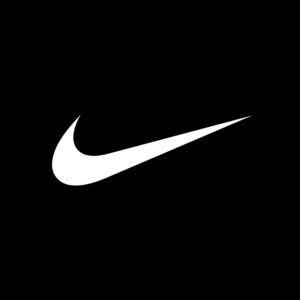
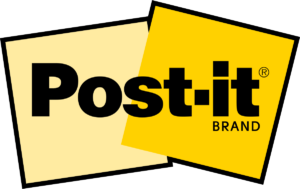
- granting the owner exclusive rights to use the mark in connection with the specified goods or services;
- providing legal remedies against unauthorized use, including the ability to take legal action against infringement, counterfeit products, or misleading use of similar marks; and
- building and protecting a company’s reputation and goodwill by ensuring quality and consistency associated with the brand.
Many of these benefits are best enforced by registration under the main trademarks statute in Canada, the Trademarks Act, R.S.C., 1985, c. T-13. Once again, this statute is federal legislation because of the constitutional division of powers allocating intellectual property to the federal level of government. Because it is a federal statute, the Trademarks Act applies uniformly throughout all provinces and territories in Canada.
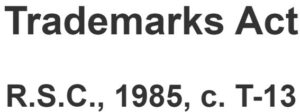
The Trademarks Act establishes a comprehensive framework for the registration and protection of trademarks in Canada. It sets out the criteria for registration of trademarks, the rights and obligations of trademark owners, and the remedies available for infringement or misuse of trademarks. The actual administration of the Trademarks Act and its implementation are carried out by CIPO.
External Resource
As with copyrights, CIPO maintains a searchable database for you to look for registered trademarks:
https://ised-isde.canada.ca/cipo/trademark-search/srch
Registered versus Unregistered Marks
Another similarity between copyright protection and trademark protection is that both do not explicitly have to be registered. However, registration of a trademark under the Trademarks Act gives the mark a much greater range of protections and easier enforcement mechanisms versus unregistered marks.
The following are some of the benefits for registering a trademark:
- Presumption of Ownership – registering grants the owner the legal presumption of ownership and the exclusive right to use the mark. This protection allows the owner to prevent others from using a similar or identical mark in connection with similar goods or services.
- National Protection – a registered trademark provides protection throughout Canada. It helps to establish a stronger legal foundation for defending the mark against potential infringers.
- ® – After registration, the trademark holder can denote it with an “R” enclosed in a circle (®) – indicating the mark is registered and protected.
On the other hand, an unregistered trademark, also known as a common-law trademark, is a mark that has not been formally registered with CIPO but is still used in business. Unregistered trademarks can still receive some level of protection based on common law principles, but they also suffer some serious draw-marks:
- Geographically Limited Protection – unregistered trademarks are protected within the specific geographic regions where they are used. This means that the scope of protection is generally narrower compared to registered trademarks.
- Burden of Proof – if an unregistered trademark is challenged by another party, the burden of proof lies with the owner to establish their prior use and reputation in connection with the mark.
- ™ – unregistered trademarks cannot use the “R” enclosed in a circle (®) designation. However, unregistered trademarks are typically denoted with “TM” to indicate that the mark user still asserts its protection (just not under the Trademarks Act).


Types of Marks Available for Registration
Not all trademarks seek to protect the same types of things. Generally, trademarks are categorized into several types, including: ordinary marks and certification marks.
Ordinary marks are the most common type of trademarks and are used to distinguish the goods or services of one entity from those of others. Ordinary marks can be in the form of words, designs, symbols, or a combination thereof. For example, “Tim Hortons” may have an ordinary marks over its name and any slogans, or the stylized word and design combination of the “Roots” logo would be an ordinary mark.
Certification marks are marks used to certify the origin, material, quality, or other characteristics of particular goods or services. Certification marks are owned by an organization that sets specific standards and authorizes others to use the mark if they meet those standards. Very commonly, we see products that have a “Canadian Standards Association” (CSA) mark; this mark certifies that products meet specific safety standards. Another common example of a certification mark is the “Fairtrade Canada” mark which certifies that products meet fair trade standards.
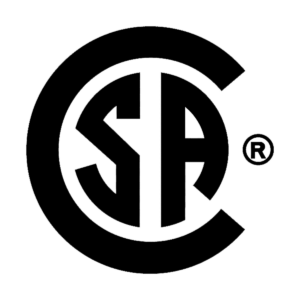
Types of Marks Not Available for Registration
While may slogans, logos, and other marks should qualify for trademark registration, there are actually quite a few reasons why a mark could not be registered.
If the proposed mark is defective for any one of the following reasons listed in the summary chart below, its registration will be rejected:
- Generics – Generic terms are common names or terms that are used to describe a particular product or service. They cannot be protected as trademarks because they are considered to be too descriptive of the goods or services they represent. For example, the term “computer” cannot be registered as a trademark for computers.
- Descriptive Terms – Descriptive terms directly describe a characteristic or quality of a product or service. They are generally not distinctive enough to be registered as trademarks unless they have acquired distinctiveness through extensive use and recognition. For example, the term “crispy” for potato chips may not be granted trademark protection.
- Deceptively Misdescriptive – These are terms that may mislead consumers about the nature, quality, or characteristics of the product or service. They cannot be registered as trademarks. For example, if a company produces non-alcoholic beverages and attempts to register a trademark like “Pure Vodka” for their drinks, it would likely be considered deceptively misdescriptive.
- Names or Surnames – Generally, surnames cannot be registered as trademarks unless they have acquired distinctiveness through extensive use and recognition in association with specific goods or services. Common surnames are considered to be too ordinary to serve as trademarks on their own. For instance, the surname “Smith” would likely be considered too common to be registered as a trademark for a specific product or service.
- Confusingly Similar – A proposed mark that is confusingly similar to an existing registered mark is not permitted due to the principle of avoiding consumer confusion in the marketplace. Consumers need to be able to confidently identify the source of the goods or services and make informed purchasing decisions; if a trademark is confusingly similar to an existing registered mark, it can lead to consumer confusion, which undermines this objective.
- Prohibited Trademarks – Certain types of trademarks are prohibited by law and cannot be protected. These include trademarks that are likely to offend public morals, or that are likely to bring the Canadian government or its symbols into disrepute.
The latter category of “prohibited”” marks largely speaks to section 9(1) of the Trademarks Act which expressly prohibits certain marks from registration. Section 9(1) aims to maintain the integrity of the trademark registration system by preventing the registration of marks that could be considered offensive, misleading, or inappropriate in relation to certain specified categories. While the statutory section is lengthy, there are a few categories of marks which are prohibited.
Firstly, section 9(1) explicitly prohibits the registration of trademarks that includes national flags, armorial bearings (such as coats of arms), official emblems, and any name or portrait of a member of the Royal Family. These restrictions are in place to prevent the misuse or misrepresentation of national symbols or the likenesses of members of the Royal Family for commercial purposes.
Secondly, there is also a prohibition on the registration of trademarks that are considered scandalous, obscene, or immortal. The determination of what constitutes scandalous, obscene, immoral, can be subjective and dependent on the view of societal norms by CIPO. Generally, trademarks that are offensive, vulgar, or contrary to accepted morality are likely to be considered scandalous or obscene and therefore not eligible for registration.
The issues relating to obscenity are challenging for CIPO to navigate and have resulted in inconsistent determinations on what will be rejected for registration. An example of this inconsistency was in CIPO’s rejection of the “Lucky Bastard” mark for “Distilled spirits, alcoholic beverages.” While “Lucky Bastard” was deemed to be “scandalous, obscene, or immoral,” there had been previous registrations granted for trademarks that incorporated the term “bastard,” such as the mark “FAT BASTARD” for wine.
While certain types of trademarks may not be eligible for registration, they can still be used as unregistered trademarks if they meet the requirements under common law (to be discussed later).
Duration of Trademarks Protection
How long does an individual or company obtain protection over their marks? This important question is answered by section 46 of the Trademarks Act:
Subject to any other provision of this Act, the registration of a trademark is on the register for an initial period of 10 years beginning on the day of the registration and for subsequent renewal periods of 10 years if, for each renewal, the prescribed renewal fee is paid within the prescribed period.
Accordingly, trademark protection lasts for an initial period of 10 years from the date of registration. During this time, mark holder can enforce the protection of their mark by preventing registration of confusingly similar marks or pursuing enforcement actions against those who are using their marks in an unauthorized way.
Interestingly, trademarks are the only form of intellectual property which can be renewed. When the initial 10-year period of protection nears expiry, trademark holders have the opportunity to renew their trademark registration again, giving them yet another 10-year window of protection. This renewal process can be indefinite allowing mark holders to, in effect, have protection for their branding marks in perpetuity. The major restriction though, is that the mark holder needs to ensure they renew before the expiry date otherwise, they may no longer have statutory protection over the mark.
Example – Duration of Trademarks
Imagine that Lululemon registered a trademark for a new logo design on January 1, 2025. The trademark protection for their logo design will be valid until January 1, 2035 — the end of the initial 10-year period. To extend this trademark protection, Lululemon must file for a renewal of their trademark before the expiry date (January 1, 2035). Assuming they file for renewal on time, their trademark protection will be extended for another 10-years. This process of renewing the trademark can be repeated indefinitely, ensuring continuous protection for Lululemon’s logo design.
Trademarks and the Public Domain
As we just noted, trademarks can be renewed however, what happens if a registered mark is not renewed. This often happens when companies forget to renew their trademarks or intentionally choose not to continue protecting them. In very similar fashion to copyrights, on the expiry of legal protection, the mark loses its legal exclusivity and falls into the public domain.
When a trademark falls into the public domain, it means that it is no longer protected by exclusive rights and can be freely used by anyone without obtaining permission or facing legal consequences. This again reflects the ongoing balance in intellectual property law of allowing exploitation of the monopoly, but when there is an indication by the mark holder that they are no longer asserting protection, the marks should be able to be freely used by the public.
Trademark Infringement
Under the Trademarks Act, a registered trademark owner has the exclusive right to use the trademark in connection with the goods or services for which it is registered. Trademark infringement occurs when anyone else uses the same or similar mark in a way that could confuse the public or deprive the registered trademark owner of the benefits associated with the trademark.
Section 20 of the Trademarks Act specifically addresses infringement and provides a list of prohibited acts. According to this section, it is considered trademark infringement if a person does numerous things:
- Identical Use Infringement – the infringer uses trademark that is identical to a registered trademark without the consent of the registered trademark owner.
- Confusing Use Infringement – the infringer uses a trademark that is confusingly similar to a registered trademark for goods or services that are the same as or similar to those covered by the registered trademark, without the consent of the registered trademark owner.
- Directs Attention – directs public attention to their goods, services, or business in a way that is likely to cause confusion with a registered trademark.
- Imports or Sells – imports or sells goods with a registered trademark applied to them without the consent of the registered trademark owner.
- False Association – falsely represents goods or services as being associated with a registered trademark owner.
In some cases, a company may use the identical registered mark which would clearly constitute a case of trademark infringement. However, in many cases, the issue is not the use of an identical mark, but rather one which is a confusing use.
Example – Identical Use Infringement
Let’s go back to the previous example of Lululemon developing a design logo and registering it. If a new company, Company X, starts using the name “Lululemon” to sell clothing items without Lululemon’s permission, it would constitute trademark infringement. Lululemon could take legal action under the Trademarks Act against Company X for trademark infringement and seek remedies such as injunctive relief, damages, and the destruction or delivery-up of the infringing goods.
In some cases, a company may use the identical registered mark which would clearly constitute a case of trademark infringement. However, in many cases, the issue is not the use of an identical mark, but rather one which is a confusing use.
Section 6(5) of the Trademarks Act addresses the issue of confusing use as trademark infringement. It states that the use of a trademark that is likely to cause confusion with the owner’s trademark, constitutes trademark infringement.
How one determines whether a mark is confusing is the purview of section 6(5) of the Trademarks Act which provides various factors for assessing confusion:
6(5) In determining whether trademarks or trade names are confusing, the court or the Registrar, as the case may be, shall have regard to all the surrounding circumstances including
(a) the inherent distinctiveness of the trademarks or trade names and the extent to which they have become known;
(b) the length of time the trademarks or trade names have been in use;
(c) the nature of the goods, services or business;
(d) the nature of the trade; and
(e) the degree of resemblance between the trademarks or trade names, including in appearance or sound or in the ideas suggested by them.
By balancing these factors, a court can determine whether the trademark in use is similar to a registered trademark in a way that could confuse consumers. The key factor is whether the use of the trademark is likely to cause confusion in the minds of consumers regarding the source of the goods or services. An interesting case outlining these issues is Veuve Clicquot Ponsardin v. Boutiques Cliquot Ltée, 2006 SCC 23.
Foundational Law – Veuve Clicquot Ponsardin v. Boutiques Cliquot Ltée, 2006 SCC 23
This case involved the famous champagne producer Veuve Clicquot Ponsardin, known for its distinctive yellow labels, and Boutiques Cliquot Ltée, a clothing retailer.
Veuve Clicquot Ponsardin argued that Boutiques Cliquot Ltée’s use of the word “Cliquot” in its name and logo, as well as its yellow storefront, was infringing on their trademark rights. Veuve Clicquot Ponsardin claimed that the similarity between the names and the use of the colour yellow would cause confusion among consumers and dilute the distinctiveness of their brand.
The Supreme Court of Canada examined whether there was a likelihood of confusion between the two marks. The Court considered several factors under section 6(5) of the Trademarks Act, including the inherent distinctiveness of the marks, the degree of resemblance between the marks, the nature of the products or services, the channels of trade, and the extent to which the marks had become known.
The Court ruled in favour of Veuve Clicquot Ponsardin stating that there was a likelihood of confusion between the marks and thus, a trademark infringement was made out. The court found that the use of the word “Cliquot” and the colour yellow by Boutiques Cliquot Ltée was likely to create an association with Veuve Clicquot Ponsardin’s champagne brand in the minds of consumers. The Court concluded that this association could lead to confusion and harm the distinctiveness and reputation of Veuve Clicquot Ponsardin’s trademark.
Unregistered Marks
Unregistered marks can still enjoy some level of protection under common law through the principle of common law trademark rights. These rights arise from the actual use of a mark in association with specific goods or services, establishing a reputation and goodwill in the marketplace. Common law rights can provide certain limited protections, such as the ability to prevent others from using a confusingly similar mark as a tort.
The primary mechanism to enforce an unregistered mark is the tort of passing off. As a claim, the tort of passing allows the owner of an unregistered mark to prevent others from misrepresenting their goods or services as those of another. It is based on the notion that no one should be allowed to pass off their goods or services as those of another and thereby deceive or confuse consumers.
Legal Test for Passing Off
To establish a claim in passing off for an unregistered mark, the following elements must be proven:
- the existence of goodwill:
- deception of the public due to a misrepresentation; and
- actual or potential damage to the plaintiff.
Under the first element of passing off, the claimant must demonstrate that their unregistered mark has acquired goodwill or a reputation in association with their goods or services. Goodwill refers to the positive reputation or value attached to the mark, which can arise through extensive use and promotion over time. According to the court, goodwill is georgraphically-specific and therefore, the goodwill only develops in areas where the mark is used.
Secondly, the claimant must show that the defendant made a misrepresentation to the public, leading or likely to lead to confusion between the defendant’s goods or services and those of the claimant. This could be using a similar mark, packaging, or other elements that are likely to confuse consumers.
Lastly, the claimant must establish that they have suffered, or are likely to suffer, actual harm or damage as a result of the defendant’s actions. This harm can include loss of customers, dilution of reputation, or economic loss.
If these three elements are successfully proven, the claimant may be granted common law remedies such as an injunction, damages for any losses, or an order for the delivery or destruction of infringing goods.
Remember that, while the tort of passing off gives some rights, the protection is more limited compared to the protection granted for registered trademarks under the Trademarks Act. Therefore, individuals and business should heavily consider registering the marks they develop.
Example – Passing Off Infringement
One more example involving Lululemon. Imagine that the name mark “Lululemon” is unregistered. A competitor, Fitzen Studios, enters the market and uses a strikingly similar mark, “Lululemmon,” along with packaging that resembles Lululemon’s branding. This misrepresentation could confuse consumers and lead to a decline in Lululemon’s customers and sales. Lululemon can file a claim against Fitzen Studios for passing off. Lululemon will then need to demonstrate their existing goodwill, the deception caused by Fitzen Studios’ misrepresentation, and the actual or potential harm suffered as a result.
Patent Law
We have now seen that copyright protect expressions of ideas and trademark protects marks which distinguish one business from another; the third form of intellectual property is patents.
A patent is a time-limited monopoly granted to an inventor which gives them exclusive rights to exploit their invention and prevent others from making, using, or selling the patented invention without permission.
The primary purpose of patents is to encourage innovation by providing inventors with the monopoly in exchange for disclosing their invention to the public. This disclosure requirement allows others to learn from the invention, build upon it, and contribute to further advancements in the field. Patents also provide a financial incentive for inventors to invest in research and development by allowing them to profit from their inventions.
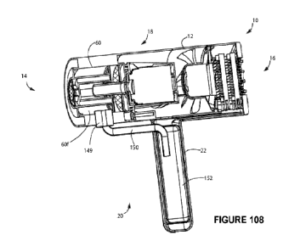
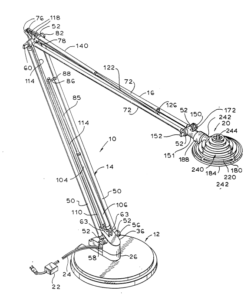
Left: Patent over a Hairdryer
Right: Patent over Halogen Light
As with other forms of intellectual property, patents are regulated and enforced by a federal statute, the Patent Act, R.S.C, 1985, c. P-4. Again, as a result of patents being federally-regulated, the registration and enforcement of patents apply nationally, throughout the entire country.
External Resource
As with copyrights and trademarks, CIPO maintains a searchable database for registered patents:
https://www.ic.gc.ca/opic-cipo/cpd/eng/search/basic.html?wt_src=cipo-search-main
Legal Test for Patentability
The starting point for patentability is to understand that the Patent Act only protects inventions. Section 2 of the Patent Act defines an invention as:
any new and useful art, process, machine, manufacture, or composition of matter, or any new and useful improvement in any art, process, machine, manufacture, or composition of matter.
Accordingly, this definition sets the scope of what can be considered patentable subject matter in Canada.
Legal Test for Patentability
The legal test for patentability involves meeting the following specific requirements outlined in sections 27 and 28 of the Patent Act:
1. Novelty
According to Section 28(1), an invention is considered novel if it is not disclosed to the public anywhere in the world before the filing date of the patent application. In other words, the invention must be new and not part of the existing knowledge base.
2. Utility
The invention must also have a specific utility or usefulness. It should be capable of practical application and provide some tangible benefit or advantage. The utility requirement ensures that patents are granted for inventions that have utility.
3. Inventiveness (Non-obviousness)
The third requirement is that the invention must be inventive or non-obvious. This means that the invention must not be obvious to a person skilled in the field of technology to which the invention pertains. In other words, the invention should involve an inventive step beyond what is already known in the field.
If the CIPO determines that an invention satisfies the legal test for patentability, a patent may be granted, conferring the exclusive monopoly rights to the inventor.
Inventions which are Not Patentable
Even if inventive, there are certain things that cannot be patented under the Patent Act and therefore, fall outside the scope of patent protection. A few examples of what cannot be patented are the following:
- Higher Lifeforms – patents cannot be granted for higher life forms, including humans and genetically identical or modified organisms. However, certain biotechnological inventions, such as genetically engineered microorganisms, plants, or animals, may be patentable.
- Scientific Principles – pure discoveries of natural phenomena or scientific principles cannot be patented.
- Mathematical Methods – abstract mathematical formulas or algorithms cannot be patented. However, specific applications or implementations of mathematical methods may be eligible for patent protection.
- Medical Methods – methods of medical treatment or surgery performed cannot be patented. However, devices or apparatus used for medical treatment may be.
- Illegal Processes – inventions or processes that are intended for illegal purposes cannot be patented. This includes any inventions or methods that are designed to facilitate or promote illegal activities, harm individuals, or violate existing laws and regulations.
Many of these exclusions results from tensions with public policy. While we wish to support invention and grant monopolies to inventors, those monopolies should not take away public access to important general scientific, medical, or business knowledge. Also, there remains societal and public policy concern with granting a monopoly over inventions that facilitate illegal acts.
A significant area of legal and societal debate over the past few decades has been over the patentability of higher lifeforms. One of the most substantial legal cases in this debate was Harvard College v. Canada (Commissioner of Patents), 2002 SCC 76, a decision from the Supreme Court of Canada.
Foundational Law — Harvard College v. Canada (Commissioner of Patents), 2002 SCC 76
The “Harvard Mouse” case involved a patent application filed by Harvard College for a genetically modified mouse, commonly known as the “oncomouse.” The ultimate question before the court was whether the oncomouse met the criteria for patentability under the Patent Act. Harvard argued that the oncomouse, which was a genetically modified life form, was patentable subject matter under the Patent Act.

In its decision, the Supreme Court of Canada determined that the oncomouse did not meet the criteria to be considered an “invention” under the Patent Act. The SCC, though split 5-4, concluded that Parliament did not intend to allow the patenting of higher life forms, as they did not fit into any of the specified categories of “art, process, machine, manufacture, or composition of matter”. Without a clear Parliamentary statement including higher life forms from patentability, the SCC found that the oncomouse, as a higher life-form, was not patentable. More precisely, the court noted:
… only Parliament is in the position to respond to the concerns associated with the patenting of all higher life forms, should it wish to do so, by creating a complex legislative scheme as in the case of crossbred plants or by amending the Patent Act. Conversely, it is beyond the competence of this Court to address in a comprehensive fashion the issues associated with the patentability of higher life forms.
Accordingly, higher lifeforms remain unpatentable in Canada.
Duration of Patent Protection
The specific statutory section that deals with the duration of patent protection is Section 44 of the Patent Act which states:
where an application for a patent is filed under this Act on or after October 1, 1989, the term limited for the duration of the patent is twenty years from the filing date.
Accordingly, the inventor gains exclusive rights to their invention for a period of 20-years from the filing date of the application. During this time period, the inventor can take steps to enforce its patent prevent the making, using, or selling the patented invention without their authorization.
In some cases, the duration of patent protection can be affected by the failure to pay required maintenance fees before the end of the full 20-year term. Additionally, some patent holders, such as pharmaceutical companies, may be permitted to extend their patent slightly to compensate for the time taken during the regulatory approval process. However, these extensions are the exception and not the rule and generally, once the 20-year protection window is over, the patent is no longer protected.
Example – Duration of a Patent
Suppose a patent for a fingerprint scanner technology was filed in Canada on April 1, 2005.
According to the Patent Act, the duration of the patent is twenty years from the filing date. Therefore, the patent for the fingerprint scanner would expire on April 1, 2025.
Once the patent expires, other companies and manufacturers would be able to the fingerprint scanner technology into their devices without infringing on the expired patent. This demonstrates the time-limited monopoly for exploiting the invention.
Once the patent protection period has expired, the patent falls into the public domain. At this point, the exclusive rights granted to the patent holder expire as well, allowing others to freely use, manufacture, sell, or improve upon the invention without obtaining permission or paying license fees.
The loss of patent protection for a company can have significant implications. Once the patented product enters the public domain, competition increases, leading to a decrease in prices as multiple companies offer generic versions. However, as a trade-off, this increased accessibility and affordability can benefit consumers who can now access the product (or similar products) at lower costs.
One of the main industries where generics (derived from lapsed patents) truly benefit the public, is in pharmaceutical drugs. When a pharmaceutical company’s drug loses patent protection, it enters the public domain, allowing other companies to produce and sell generic versions of the drug; this results in wider accessibility for the medication. The original patent holder will certainly experience a decline in market share but is free to seek new patents by developing improvements to the old pharmaceutical.
One notable example of this lapse of patent protection was in the drug molecule known as raloxifene. Raloxifene is used in the treatment of osteoporosis (the development of brittle or fragile bones) and prevention of breast cancer in postmenopausal women.
Eli Lilly, a pharmaceutical company, obtained a Canadian patent for raloxifene under the brand name Evista. The patent was granted in 1993 and expired in 2010, after 17 years of exclusivity. Once the patent expired, other pharmaceutical companies were able to produce and sell generic versions of raloxifene in Canada without needing permission from Eli Lilly. When raloxifene entered the public domain, it became more accessible to patients as generic versions were introduced at lower prices.
Patent Infringement under the Patent Act
According to the Patent Act, a patent owner has the exclusive right to make, construct, use, and sell the patented invention within Canada during the term of the patent. Based on this understanding, a person would be committing patent infringement if they were found:
- Use of Patent – making, constructing, using, or selling a patented invention without the consent of the patent owner.
- Importing Patent – importing or causing to be imported a patented invention for the purpose of selling, using, or constructing it within Canada, without the consent of the patent owner.
- Offering to Sell – offering to sell or rent, or using for the purpose of trade, a patented invention without the consent of the patent owner.
- Inducing Infringement – inducing or procuring another person to commit any of the above-mentioned acts without the consent of the patent owner.
Foundational Law — Nova Chemicals Corp. v Dow Chemical Co., 2022 SCC 43
This case involved Dow Chemical Co., a multinational corporation specializing in chemical products, including polyethylene plastics. Nova Chemicals Corp. is also a company in the chemical industry, involved in the production and sale of various chemical products.
Dow accused Nova of infringing its patent related to polyethylene plastic products. The Federal Court of Canada agreed and found Nova Chemicals Corp. liable for patent infringement and awarded Dow Chemical Co. $645 million in damages. At the time, this was the largest damages award in Canadian history for patent infringement.
Much of the appeal surrounded whether the award for damages was appropriate. The SCC confirmed both the infringement finding and also that the calculation of damages done by the court was appropriate.
Industrial Designs
One last form of intellectual property worthy of discussion, is industrial designs. Industrial designs protect the visual features of a product, including its shape, configuration, pattern, or ornamentation. As has been the case throughout, industrial designs, as intellectual property, are federally-regulated. In the case of industrial designs, they are governed by the Federal Industrial Design Act, R.S.C., 1985, c. I-9.

Industrial designs are aimed at protecting the aesthetic appeal and commercial value of a product, rather than its functional aspects. The owner of an industrial design enjoys exclusive rights to prevent others from making, selling, or importing articles that embody the claimed description of the registered design. If others copy or significantly imitate the design, the industrial design registration can be enforced.
For example, imagine a designer creates a unique and aesthetically appealing chair design with distinctive patterns. The designer can apply for an industrial design registration to protect the visual features of the chair.
External Resource
As with the other forms of intellectual property, CIPO maintains
a searchable database over industrial designs:
https://www.ic.gc.ca/app/opic-cipo/id/bscSrch.do?lang=eng
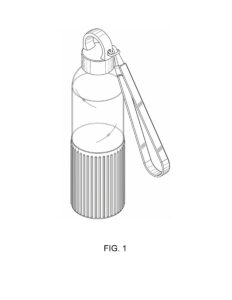
To be eligible for registration, the design must focus on the aesthetic features of a product and must be new (unpublished or disclosed less than 12 months prior to the application filing). It is crucial to file an industrial design application promptly to maintain its novelty requirement. If the design has already been made public, the application must be submitted within 12 months of that disclosure. Failure to comply with these requirements will result in the rejection of the registration application.
An industrial design registration provides protection for either 10 years from the registration date or 15 years from the filing date, depending on which period ends later. To maintain the registration, a maintenance fee must be paid by the fifth year to cover the remaining years of the 10-year or 15-year period.

